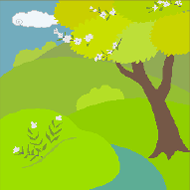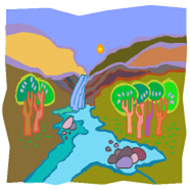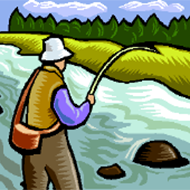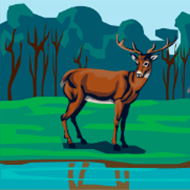Buffers “lessen or moderate the impact of something”. When it comes to keeping our waterways healthy, buffers lessen or moderate the human impacts of construction, agriculture, and roads. They also lessen the natural impacts in the form of landslides, flood events, and fires on water quality.
A buffer is made up of a mat of trees, grasses and shrubs whose roots “glue” the soil along stream banks and also provide habitat for insects that ultimately end up as food for aquatic organisms. The vegetative buffers also provide shade which keeps stream channels cool.
The most prevalent and most harmful form of pollution in our streams is sediment or simply put, dirt. Dirt in our streams covers rocks used for hiding and nesting, in muck.
When the buffer (vegetation) is removed, the roots of plants no longer hold the soil and flowing water from the channel, or runoff from rainstorms, loosen the soil so stream banks collapse. Buffers not only help hold stream banks in place but they also act as a filter by slowing down surface runoff allowing water to soak into the soil.
Click here a list of plants that make good stream buffers.


Water Quality
Vegetation along stream banks keeps soil, pesticides, and fertilizers from getting into the stream.

Roots
Roots anchor the soil, reduce flood damage, and take up excess fer- tilizers.

Food & Shelter
Leaves and branches provide food and shelter for insects, fish, and other aquatic life.

Water Flow
A healthy shaded stream slows down water, which helps to maintain stable stream banks and protects downstream property.

Cool Temperatures
Shade keeps the water cool, allowing fish and aquatic life to thrive.

Wildlife Habitat
Shaded streams pro- vide valuable habitat for wildlife.